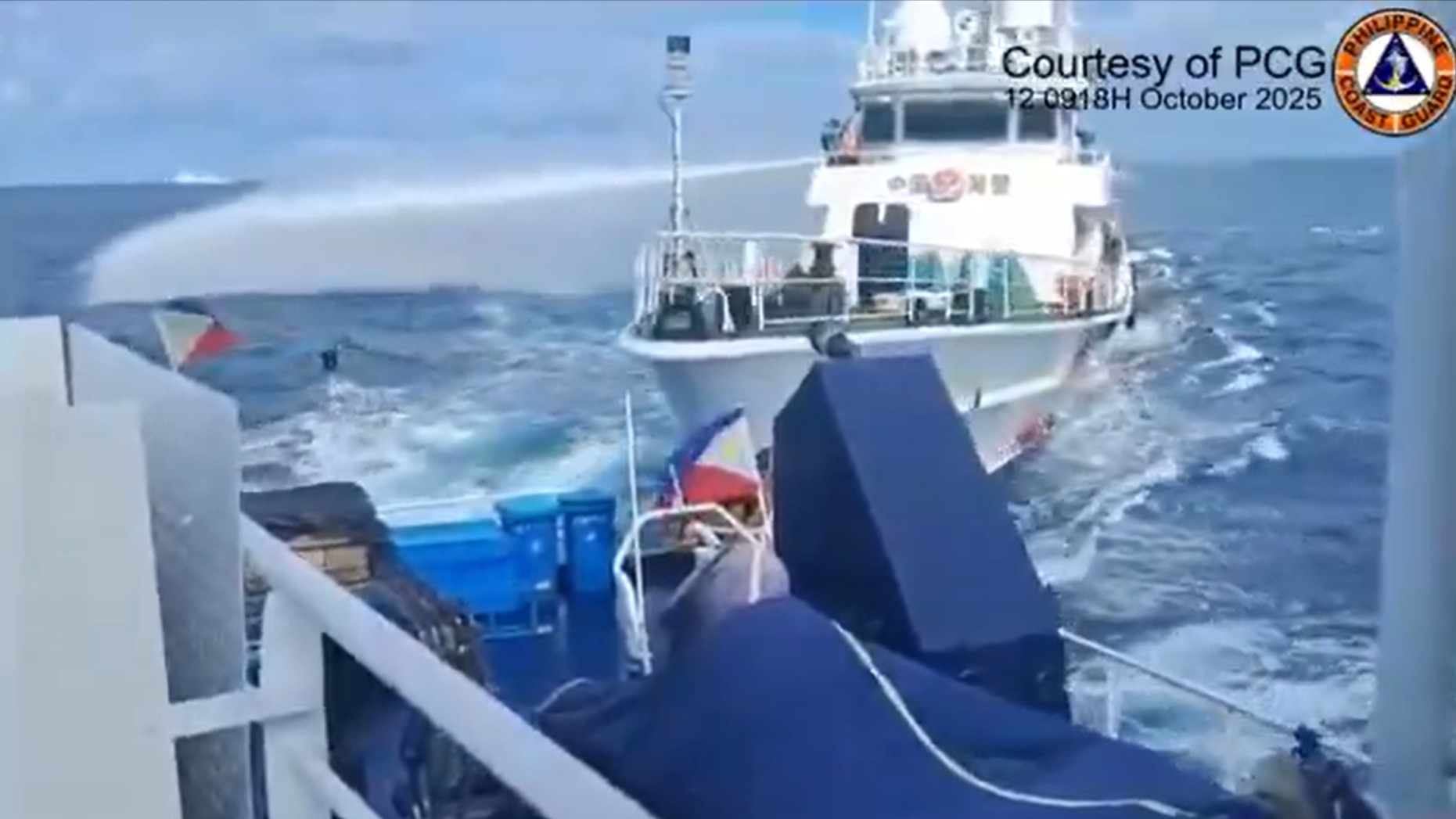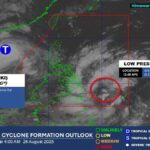A China Coast Guard ship used water cannons and later collided with a Philippine government vessel in the territorial waters of Pag-asa Island on Sunday morning.
“This morning, while three Bureau of Fisheries and Aquatic Resources vessels, including the BRP Datu Pagbuaya, were safely anchored in the territorial waters of Pag-asa Island to provide protection for Filipino fishermen, they faced dangerous and provocative maneuvers from China Coast Guard and Chinese Maritime Militia vessels.”
Philippine Coast Guard and Bureau of Fisheries and Aquatic Resources Stand Firm Against Chinese Bullying and Aggressive Actions in Pag-asa
The Philippine Coast Guard and the Bureau of Fisheries and Aquatic Resources have reaffirmed their strong commitment to protecting Filipino fishermen in the Kalayaan Island Group…
Around 8:15 a.m., “the Chinese maritime forces approached dangerously close, activating their water cannons as a clear threat against the Bureau of Fisheries and Aquatic Resources vessels.”
The situation “escalated” at 9:15 a.m. when a China Coast Guard vessel with bow number 21559 fired its water cannon directly at the BRP Datu Pagbuaya, hitting the vessel.
Three minutes later, the same China Coast Guard vessel deliberately collided with the stern of the Datu Pagbuaya with the impact captured on video. The contact caused “minor structural damage but no injuries to the crew.”
Both the Philippine Coast Guard and the Bureau of Fisheries and Aquatic Resources have reaffirmed their “strong commitment to protecting Filipino fishermen in the Kalayaan Island Group, vowing to remain undeterred despite aggressive harassment and direct threats from Chinese vessels in the territorial waters of Pag-asa Island.”
“Despite these bullying tactics and aggressive actions, the Philippine Coast Guard and Bureau of Fisheries and Aquatic Resources remain resolute. We will not be intimidated or driven away, as our presence in the Kalayaan Island Group is crucial for protecting the rights and livelihoods of Filipino fishermen.”
The National Maritime Council released a statement condemning the latest act of aggression.
“The Philippines will undertake the appropriate diplomatic action to convey its strong objections to the aggressive and illegal actions, and urges it to immediately cease these actions, respect international law, particularly the 1982 UNCLOS and the 2016 Arbitral Award, and avoid further escalation in the region.”
Pag-asa Island
Pag-asa Island is the largest naturally formed island of the Spratly Islands in the South China Sea and is administered by the Philippines as part of the municipality of Kalayaan, Palawan. The Philippines established a civilian community and a military presence on the island in the 1970s to assert its territorial claim. It remains a strategically significant and politically contested location in the region.
Kalayaan Island Group
The Kalayaan Island Group is a collection of features in the South China Sea administered by the Philippines as part of Palawan province. The islands are also claimed by several nations, including China and Vietnam, and are historically significant due to their strategic location and resource potential. The Philippines established a presence there in the 1970s to reinforce its sovereignty claim.
BRP Datu Pagbuaya
The BRP Datu Pagbuaya (FF-601) is a Philippine Navy frigate, formerly the ROKS Chung Ju from the South Korean Navy. It was commissioned into Philippine service in 2020, named after Datu Pagbuaya, a 16th-century chieftain who led the first Filipino settlement in Bohol. The ship enhances the Navy’s fleet modernization and patrol capabilities in the country’s territorial waters.
China Coast Guard
The China Coast Guard is a maritime law enforcement agency responsible for maintaining security and order in China’s coastal and territorial waters. It was officially established in its current form in 2013 through the consolidation of several civilian maritime agencies. Its role has expanded significantly in recent years, often operating in disputed waters to assert China’s territorial claims.
Philippine Coast Guard
The Philippine Coast Guard (PCG) is the country’s primary maritime law enforcement and search and rescue agency. It was formally established as a separate service under the Department of Transportation in 1967, evolving from earlier coast guard functions performed by the Philippine Navy. Its mandate includes ensuring maritime safety, protecting the marine environment, and upholding maritime laws within the Philippine waters.
Bureau of Fisheries and Aquatic Resources
The Bureau of Fisheries and Aquatic Resources (BFAR) is the primary government agency in the Philippines responsible for the development, management, and conservation of the country’s fishery and aquatic resources. It was first established in 1932 as the Division of Fisheries under the Department of Agriculture and Commerce, before being reorganized into its current form. Its mandate includes ensuring food security, supporting fisherfolk communities, and protecting the sustainability of the nation’s marine and freshwater ecosystems.
UNCLOS
“UNCLOS” refers to the United Nations Convention on the Law of the Sea, which is an international treaty rather than a physical place. Adopted in 1982, it established a comprehensive legal framework governing all uses of the world’s oceans and seas. Its history stems from a need to codify and create a stable regime for maritime boundaries, navigation, and resource management.
Arbitral Award
An Arbitral Award is not a physical place or cultural site, but a legal decision issued by an arbitration tribunal to resolve a dispute outside of the court system. Its history is rooted in ancient practices of private dispute resolution and has evolved into a formal, binding alternative to litigation, widely used in international commerce and investment. The award itself represents the final and legally enforceable outcome of this private judicial process.






